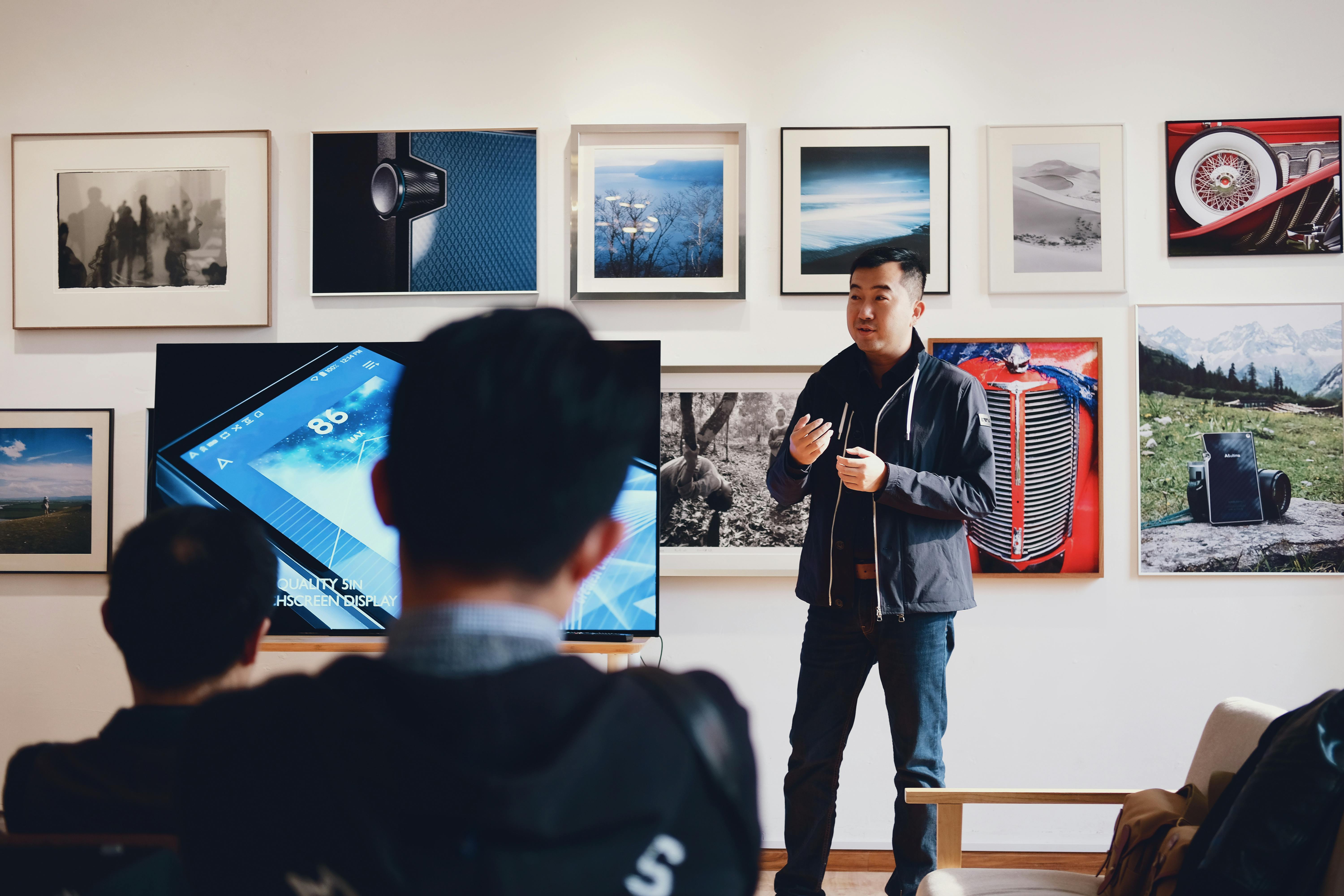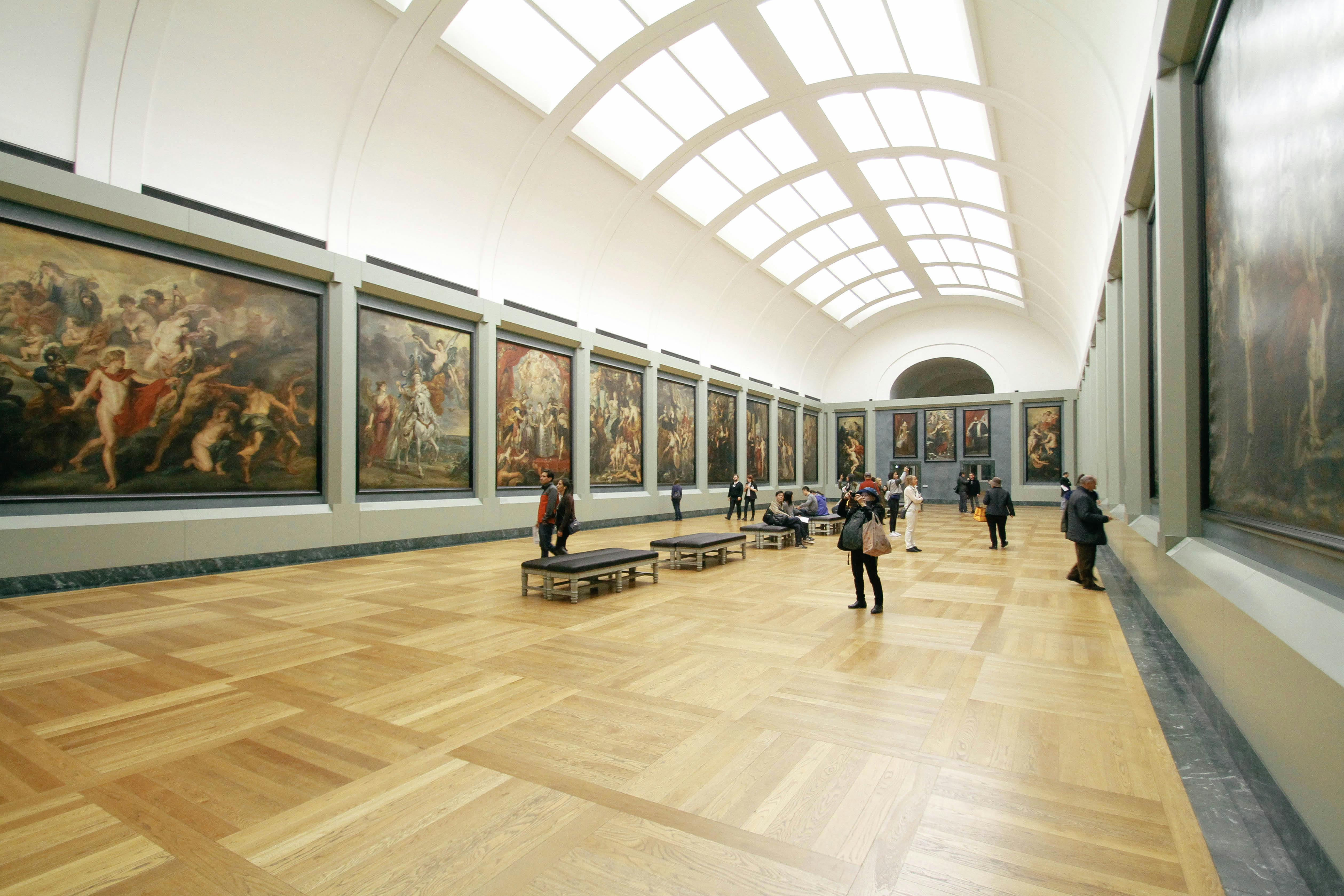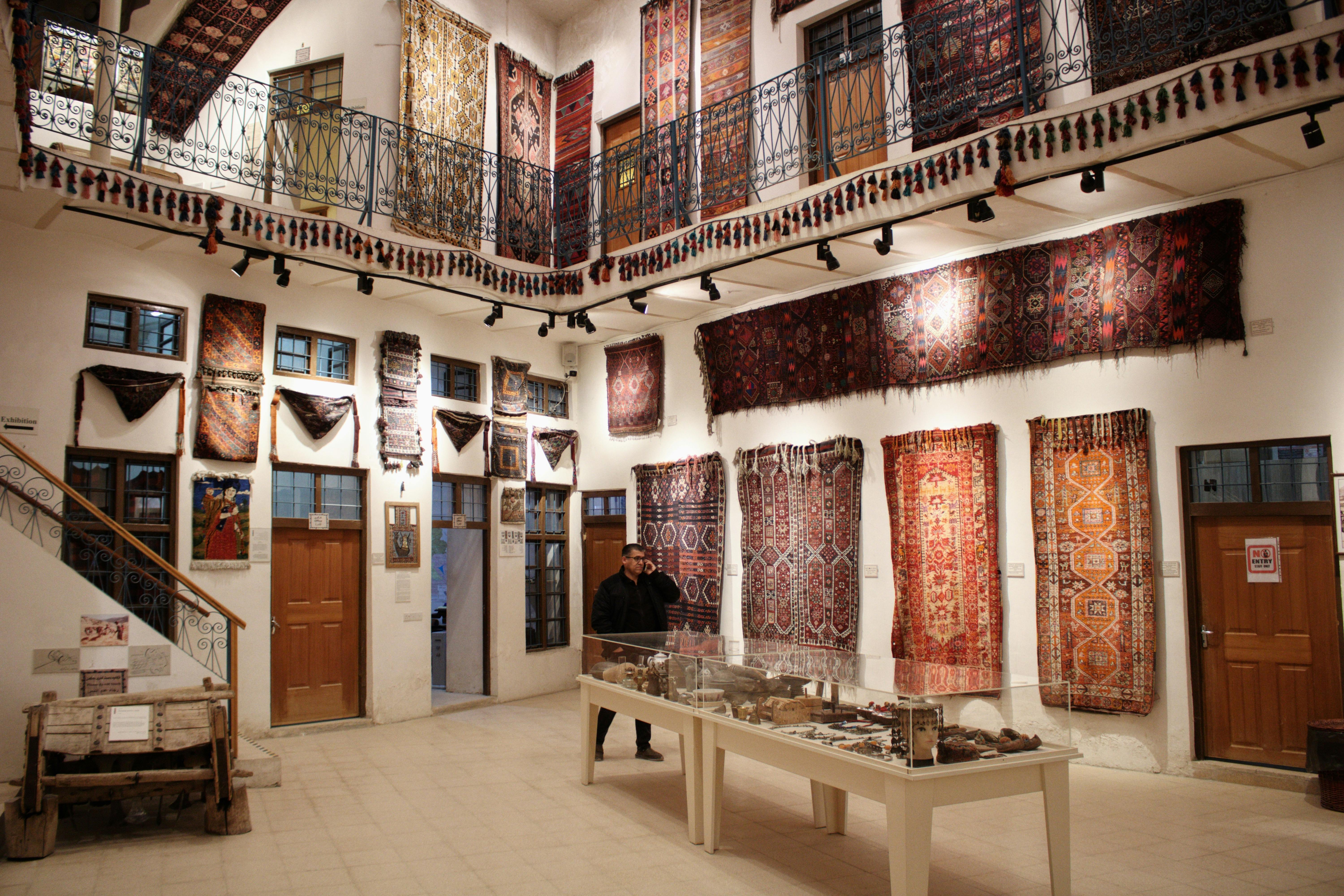Table of Contents
- Introduction to Successful Exhibitions
- The Importance of Engaging with Visitors at Exhibitions
- Strategies to Engage Visitors at Your Exhibition
- The Power of Follow-Ups After an Exhibition
- Secrets to Effective Exhibition Follow-Up Strategies
- Showcasing Your Exhibition Work Online Using Portfoliobox
- Tips for Promoting Your Exhibition on Your Portfoliobox Website
- The Role of Social Media in Exhibition Promotion and Follow-Up
- The Impact of Engagement and Follow-Up on Exhibition Success
- Conclusion
- FAQ

Introduction to Successful Exhibitions
In the world of art and commerce, exhibitions stand as pivotal events that can make or break one's reputation and business outcomes. A successful exhibition is not merely about displaying products or artwork; it is an intricate dance of attracting, engaging, and maintaining relationships with visitors and potential clients. In today's fast-paced environment, exhibitors must understand the nuances of human interaction and the tools at their disposal to captivate an audience. This comprehensive guide delves into the secrets of creating a successful exhibition by focusing on effective engagement with visitors and strategic follow-up practices.
Creating an impactful exhibition experience requires meticulous planning, from the booth's design to the staff's preparedness to engage with attendees. It's not enough to have an attractive display; the exhibitors must also be proactive in starting conversations, answering questions, and making visitors feel valued. In addition, leveraging technology and online platforms to extend the reach and lifespan of an exhibition is becoming increasingly important. This article will explore these avenues in depth, ensuring that exhibitors have a robust strategy for their next event.
The Importance of Engaging with Visitors at Exhibitions
Engaging with visitors is not just a nicety; it is a necessity. People attend exhibitions seeking information, inspiration, and perhaps a connection that could lead to future business or collaboration. When visitors are engaged effectively, it creates a memorable experience that can influence their perception of the brand or artist. This section will emphasize the significance of visitor engagement and how it can set the tone for the entire exhibition and beyond.
First impressions are often lasting ones, and the initial interaction between exhibitors and visitors can set the stage for a positive ongoing relationship. Exhibitors must be well-versed in the art of conversation, skilled in reading body language, and adept in listening to truly understand the needs and interests of their audience. When a visitor feels heard and appreciated, they are more likely to spend time at the booth, return for another visit, or recommend it to others.
Furthermore, engaging visitors goes beyond face-to-face interaction. It includes creating an immersive environment that stimulates the senses and provokes curiosity. Whether through interactive displays, live demonstrations, or thought-provoking presentations, the goal is to make the exhibition booth a destination within the event, a place where visitors are not just spectators but active participants.
Strategies to Engage Visitors at Your Exhibition
Making the First Move
Exhibitors should not wait for visitors to approach them; instead, they must be proactive in initiating contact. Greet attendees with a warm smile, open posture, and a friendly introduction. Use open-ended questions to start conversations and show a genuine interest in the visitor's perspective. By taking the lead, exhibitors demonstrate confidence and create an inviting atmosphere that encourages interaction.
Interactive Elements
Incorporate elements that require visitor participation. This could include touch screens with surveys or quizzes, VR experiences related to the product or artwork, or hands-on demonstrations. Interactive features not only draw attention but also create a memorable experience that visitors are likely to recall and discuss with others.
Educate and Entertain
Striking a balance between informative and entertaining is key. Seminars, workshops, or live Q&A sessions can provide valuable insights while keeping the audience engaged. Performances or artistic showcases can complement the educational aspect with a touch of entertainment, ensuring that visitors remain captivated throughout their experience at the exhibition.
The Power of Follow-Ups After an Exhibition
Once the exhibition concludes, the engagement should not end there. The power of follow-ups lies in their ability to solidify connections and turn leads into opportunities. This section will explore the significance of post-exhibition communication and how it can extend the impact of the event.
Effective follow-up practices begin with organization. Exhibitors should collect contact information from visitors in a systematic way, ensuring that no potential lead is lost in the shuffle. Personalized messages that reference the interaction at the exhibition show that the exhibitor values the connection and is interested in continuing the conversation.
Timing is also crucial in follow-ups. Reach out to visitors while the exhibition is still fresh in their minds. A prompt follow-up demonstrates professionalism and eagerness to engage further. Whether through an email, phone call, or handwritten note, the follow-up should be tailored to the nature of the interaction and the visitor's expressed interests.

Secrets to Effective Exhibition Follow-Up Strategies
Personalization is Key
Generic follow-up messages are often disregarded as impersonal and insincere. To stand out, exhibitors must personalize their communication. Mention specific details from the conversation, reference particular products or artworks that the visitor showed interest in, and offer additional information that aligns with their needs.
Offer Value
Follow-up communication should offer something of value to the recipient. This could be an exclusive offer, a downloadable resource, or an invitation to a private event. Providing value reinforces the relationship and gives the visitor a reason to respond.
Multiple Touchpoints
One follow-up message is rarely enough to make an impression. Plan a sequence of communications that gradually build the relationship without overwhelming the recipient. A mix of different mediums—email, social media, phone calls—can cater to the preferences of diverse visitors and keep the exhibitor top-of-mind.
Showcasing Your Exhibition Work Online Using Portfoliobox
In the digital age, an online presence is indispensable for showcasing exhibition work. Portfoliobox is an intuitive platform that enables exhibitors to create professional websites that highlight their products or artwork. This section will guide exhibitors through the process of using Portfoliobox to extend the reach of their exhibition.
A well-designed website on Portfoliobox serves as a virtual extension of the exhibition booth. It allows visitors to revisit the work at their leisure and provides a point of contact for those who may not have attended the event. High-quality images, detailed descriptions, and stories behind the work can create a rich online experience that engages visitors and entices them to explore further.
Portfoliobox also offers tools for e-commerce, enabling exhibitors to sell their work directly from their website. This feature can be particularly beneficial for artists and small businesses looking to capitalize on the interest generated at the exhibition. By making it easy for visitors to purchase or inquire about products or artwork, exhibitors can turn engagement into tangible results.
Tips for Promoting Your Exhibition on Your Portfoliobox Website
Create a Dedicated Exhibition Page
Craft a page specifically for your exhibition, complete with all the details—date, location, theme, featured works. Use this space to build excitement before the event and to provide a recap and highlights afterward. Including testimonials or visitor feedback can add credibility and appeal.
Leverage SEO
Optimize your Portfoliobox website for search engines by incorporating relevant keywords, meta descriptions, and alt text for images. This increases the chances of your exhibition page being found by potential visitors and interested parties.
Update Regularly
Keep your website content fresh by regularly updating it with new work, upcoming exhibitions, and news. Consistent updates not only improve SEO rankings but also give visitors a reason to return to your site.
The Role of Social Media in Exhibition Promotion and Follow-Up
Social media platforms are powerful tools for promoting exhibitions and engaging with audiences before, during, and after the event. This section will highlight the role of social media in amplifying the reach of an exhibition and maintaining the momentum of visitor engagement.
Before the exhibition, use social media to create buzz and anticipation. Share sneak peeks, behind-the-scenes looks, and countdowns to the event. During the exhibition, encourage visitors to share their experiences and tag the exhibitor's social media profiles. This user-generated content can expand the event's visibility and attract more attendees.
After the exhibition, continue the conversation on social media. Share photos and videos from the event, thank visitors for attending, and post follow-up content that keeps the dialogue going. Social media can also be a platform for ongoing follow-up, offering another touchpoint for building and nurturing relationships with visitors.

The Impact of Engagement and Follow-Up on Exhibition Success
The true measure of an exhibition's success goes beyond the number of visitors or immediate sales. It is determined by the depth of engagement during the event and the effectiveness of follow-up afterward. These strategies work in tandem to create lasting impressions, foster relationships, and drive future opportunities.
Engagement at the exhibition creates a foundation of interest and trust. It's an opportunity to communicate the value of the work and to understand the needs and preferences of the audience. Follow-up strategies cement the initial connection and open the door for ongoing engagement, whether that leads to sales, collaborations, or simply a larger network.
The cumulative effect of engagement and follow-up can be significant. Exhibitors who master these practices often see a higher return on investment from their exhibitions, as they are able to convert more leads into loyal customers or advocates for their work.
Conclusion
A successful exhibition is the result of careful planning, active engagement with visitors, and strategic follow-up. By recognizing the importance of these elements and utilizing tools such as Portfoliobox to showcase and promote their work, exhibitors can significantly increase the impact of their exhibitions. The secrets to a successful exhibition lie in the ability to connect with visitors on a personal level and maintain that connection long after the event has ended.
FAQ
Q: How can I effectively collect visitor information for follow-up? A: Consider using digital tools like tablets for quick sign-ups or QR codes that link to a sign-up page on your Portfoliobox website. Always ensure you have consent to contact them and explain how their information will be used.
Q: How often should I follow up with exhibition visitors? A: Start with an initial follow-up within a few days of the exhibition's end to ensure you're still fresh in their minds. Then, plan a follow-up sequence that might include a mix of emails, social media engagement, and possibly a phone call, spaced over several weeks or months, depending on the nature of your relationship and industry practices.
Q: Is it necessary to have a website to showcase my exhibition work? A: While not strictly necessary, having a dedicated website like one created with Portfoliobox greatly enhances your professional presence and can be an invaluable tool for engaging with a wider audience and providing a platform for sales and inquiries.
Q: How can I use social media to engage with visitors after the exhibition? A: Post-exhibition, use social media to share highlights, express gratitude to attendees, and continue sharing content related to the exhibition. Engage with users who comment or share their own content from the event to keep the conversation going.












